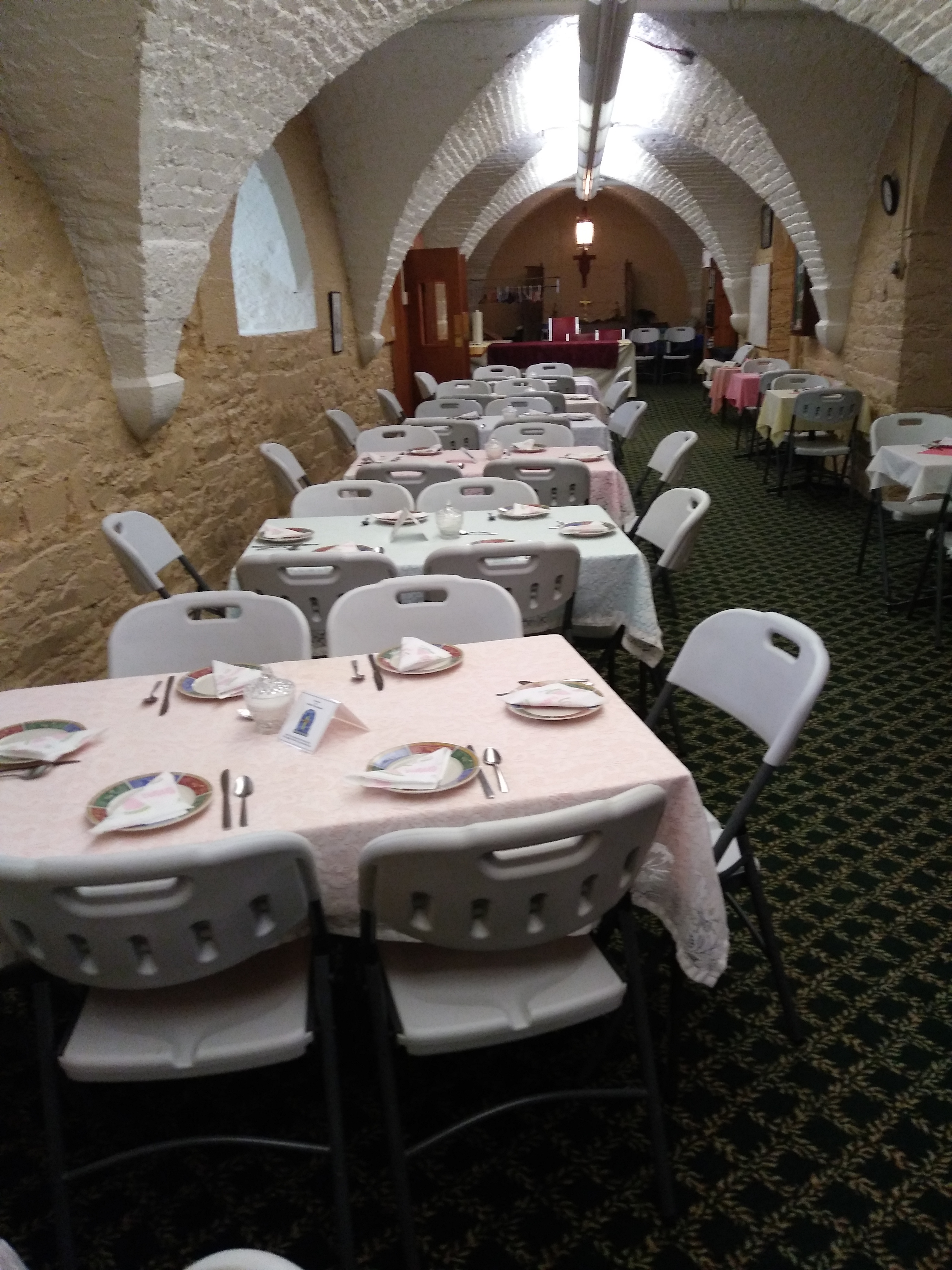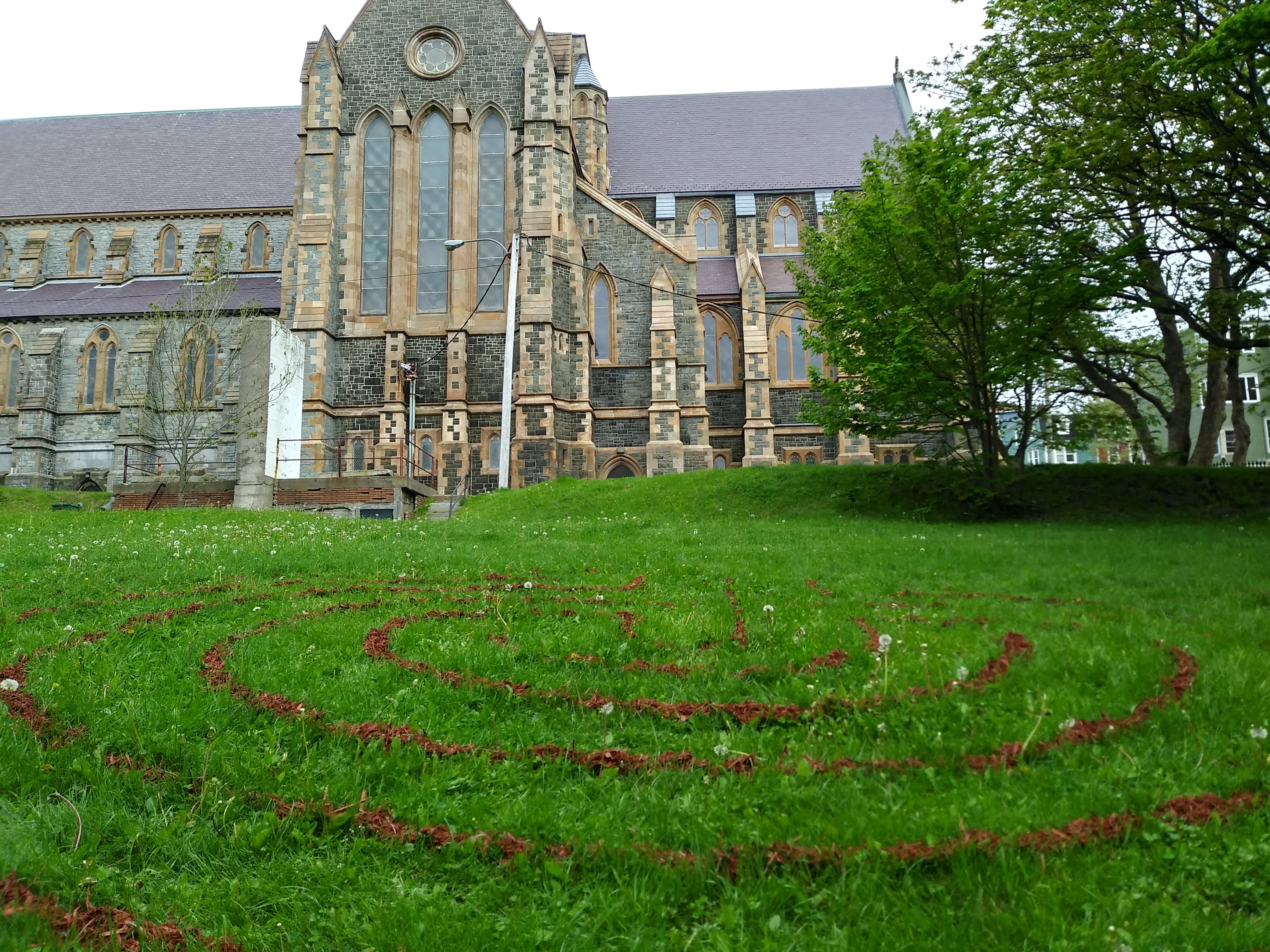Virtual Tour
This Tour is useful if you are walking through the Cathedral,
or visiting from your own home!
More Points of Interest
The Cathedral Crypt
Opposite the entrance to the Sacristy are the stairs leading down to the Crypt, which contains the Sunday School Rooms, the Choir Rooms, and the Cathedral offices. The main office was formerly the Trinity Chapel, dedicated in 1983, after the area beneath the Chancel (through the archway to the right of the stairs), had been excavated. Some of its panelling is the work of the then Cathedral Verger, John Janes, and was the gift of the Women's Home Mission Association. The stained glass window comes from the former chapel at the Anglican Cemetery on Forest Road. The chapel was de-consecrated in 2007, and the space was renovated and re-opened as an office in 2008.
Through the room to the right of the exit, you wind your way to the Crypt. The Crypt is used for the Cathedral Choir, the Sunday School, receptions and meetings. This area, officially opened in December 1979, was developed using funds donated by parishioners. The figure of Christ in Glory above the Altar at the west end was carved by a Chinese sculptor in eastern Malaysia. The Crypt is also the site of the summer Crypt Tea Room.
The Old Burying Ground
Immediately to the south of the Cathedral lies the oldest consecrated cemetery in St. John's, originally known as the Burying Ground. It served as the final resting place for people of all religious persuasions; records of burials date back to 1752. Closed to burials in 1849, the churchyard is said to have been filled over three times during the years it was in use. For several years there has been a small community garden in the Church Yard, and in the Summer of 2020, the Cathedral Garden Labyrinth is located on the east end of the Church Yard.
Cathedral Artifacts
The Cathedral's treasures include many objects of both historical significance and great beauty, including sets of communion silver and Bishop Jones' crozier. On special occasions, they are used at worship. The Cathedral Archive contains records of Baptisms, Marriages, and Burials from 1752 to the present, as well as many old photos and Scott's plans for the Cathedral.


